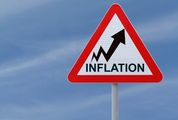SA IS experiencing the lowest rainfall in 55 years, the SA Weather Service says, as the effects of the drought continue to hit the agricultural sector.
From 2012 to last year, annual rainfall has been below average, the weather service says.
In calculating the national annual rainfall totals, the service used the monthly average rainfall from 1961 to last year for the nine provinces.
Last year, SA got 400mm of rain, down from just under 600mm in 2014, which is the annual average.
The drought in the continent’s biggest maize producer follows dry spells last year that reduced the crop by a third to 9.94-million tonnes, the lowest since 2007.
SA has experienced dry and very hot conditions in the past few months. Weather experts have attributed this to the El Niño phenomenon.
The El Niño pattern is a warming of the equatorial Pacific caused by a weakening of the trade winds that normally push sun-warmed waters to the west. This triggers a reaction from the atmosphere above.
"The southern section of Africa gets much drier and gets drought weather conditions, whereas East Africa gets wet conditions," Mary Scholes, who heads the South African Climate Leadership Programme at the University of the Witwatersrand, said.
Prof Scholes said forecasters had been able to predict the onset of El Niño in the current season, "but we just didn’t know that it would be so strong".
It had become increasingly difficult for weather experts to predict El Niño, the reasons for which were unclear, she said.
More rain was expected to fall in March, but Prof Scholes said the amount, expected to be between 100mm and 200mm, would not be enough to fill dams.
By then it could be too late for farmers to start planting their crops.
Prof Scholes said the prices of domestically grown maize and wheat were expected to rise, but meat product prices might decrease before they went up. This was because livestock farmers would be forced to slaughter their livestock as it became more difficult to feed.
Dry weather conditions have especially affected summer crops such as the country’s staple maize, as well as sugar cane.
Grain SA says the country may need to import as much as 5-million tonnes of maize this year, roughly half of its requirements. "We can now, with a lot of confidence, say we are in a disaster in the maize belt," Grain SA CEO Jannie de Villiers said last week.

Jannie de Villiers. Picture: FINANCIAL MAIL
SA IS experiencing the lowest rainfall in 55 years, the SA Weather Service says, as the effects of the drought continue to hit the agricultural sector.
From 2012 to last year, annual rainfall has been below average, the weather service says.
In calculating the national annual rainfall totals, the service used the monthly average rainfall from 1961 to last year for the nine provinces.
Last year, SA got 400mm of rain, down from just under 600mm in 2014, which is the annual average.
The drought in the continent’s biggest maize producer follows dry spells last year that reduced the crop by a third to 9.94-million tonnes, the lowest since 2007.
SA has experienced dry and very hot conditions in the past few months. Weather experts have attributed this to the El Niño phenomenon.
The El Niño pattern is a warming of the equatorial Pacific caused by a weakening of the trade winds that normally push sun-warmed waters to the west. This triggers a reaction from the atmosphere above.
"The southern section of Africa gets much drier and gets drought weather conditions, whereas East Africa gets wet conditions," Mary Scholes, who heads the South African Climate Leadership Programme at the University of the Witwatersrand, said.
Prof Scholes said forecasters had been able to predict the onset of El Niño in the current season, "but we just didn’t know that it would be so strong".
It had become increasingly difficult for weather experts to predict El Niño, the reasons for which were unclear, she said.
More rain was expected to fall in March, but Prof Scholes said the amount, expected to be between 100mm and 200mm, would not be enough to fill dams.
By then it could be too late for farmers to start planting their crops.
Prof Scholes said the prices of domestically grown maize and wheat were expected to rise, but meat product prices might decrease before they went up. This was because livestock farmers would be forced to slaughter their livestock as it became more difficult to feed.
Dry weather conditions have especially affected summer crops such as the country’s staple maize, as well as sugar cane.
Grain SA says the country may need to import as much as 5-million tonnes of maize this year, roughly half of its requirements. "We can now, with a lot of confidence, say we are in a disaster in the maize belt," Grain SA CEO Jannie de Villiers said last week.






















Change: -0.47%
Change: -0.57%
Change: -1.76%
Change: -0.34%
Change: 0.02%
Data supplied by Profile Data
Change: -1.49%
Change: 0.08%
Change: -0.47%
Change: 0.00%
Change: -0.04%
Data supplied by Profile Data
Change: -0.34%
Change: 0.03%
Change: -0.10%
Change: -0.22%
Change: -0.69%
Data supplied by Profile Data
Change: -0.28%
Change: -1.15%
Change: -0.07%
Change: -1.21%
Change: -0.22%
Data supplied by Profile Data